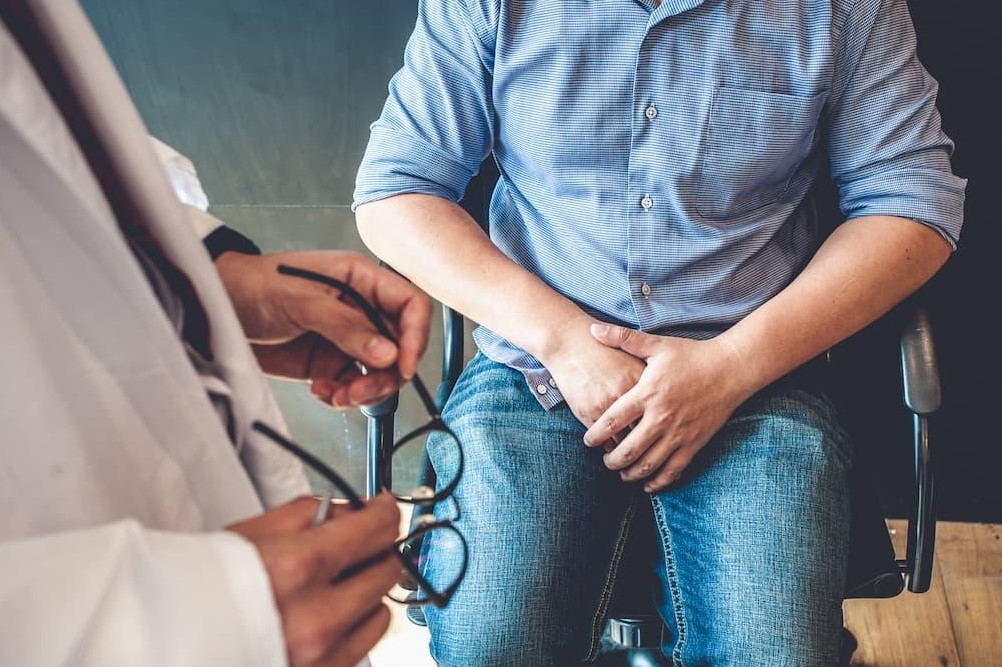
Testicular pain: what can be the causes?
It is common for young males to experience testicular pain, although it is a common clinical manifestation at any age
In some cases it may be the direct consequence of external factors, such as pressure, bumps, bruises, but also the wearing of overly tight clothing; in others, the pain is a symptom of other pathologies and may affect both testicles or only one.
Testicular pain: where can it occur?
Pain in the testicles can affect the scrotal sac, the fibro-muscular skin lining containing the testicles, and the epididymis, the structures located on top of the testicles, but also the initial tract of the spermatic cord.
What diseases can cause testicular pain?
There are several diseases that can cause testicular pain.
They include:
- kidney or ureteral stones;
- inguinal hernia. An inguinal hernia is a condition in which part of the small intestine or intra-abdominal fat protrudes into the inguinal canal due to a weakness in the wall, causing pain and swelling in the affected area, including the testicles;
- hydrocele. This is a condition in which the scrotal sac fills with fluid; it is usually caused by inflammation, trauma to the scrotal area or previous testicular surgery. A hydrocele is a benign condition that, if particularly voluminous, can cause pain and discomfort in the testicles;
- epididymis cysts. These are fluid collections circumscribed by a thin membrane that originate in the epididymis or within the spermatic cord. When they contain a dense fluid with non-viable spermatozoa, they are called spermatoceles;
- orchi-epididymitis. Orchi-epididymitis is an inflammation of the testis and epididymis, often caused by a bacterial infection.
- prostatitis. Prostatitis is an inflammation of the prostate gland, which affects 30% to 50% of sexually active men; it is sometimes due to a bacterial infection of the gland, although in many cases no microorganism can be detected (abacterial prostatitis). When symptomatic, prostatitis may cause pain in the pelvic floor, with spasms in the perineal muscles and often involvement of the testicular area;
- varicocele. Varicocele is caused by a reflux of blood from the left renal vein to the testicle, which causes blood stagnation and increased temperature and local temperature. The increased temperature can cause a decrease in the production and quality of seminal fluid, leading to infertility. If severe, varicocele can cause a feeling of weightiness up to and including pain in the testicle;
- testicular torsion. We mean the torsion of the spermatic cord, which connects the testicle to the abdomen. Since the spermatic cord is supplied by many blood vessels, the blood supply may be interrupted in the event of torsion, which may lead to ischaemia and related damage, potentially irreversible if not treated promptly;
- testicular cancer. Testicular cancer is a rare neoplasm that develops as a result of an alteration in the cells of the testis, causing them to grow uncontrollably, leading to the formation of a mass. Most testicular tumours originate from the germ cells, which give rise to spermatozoa. In most cases the testicular tumour arises as an indolent mass, but in a minority of patients it may present as pain in the affected testis.
Testicular pain: what to do?
In the case of testicular pain, it is a good idea to consult a doctor, because it is necessary to find out what the underlying cause is.
If the pain is mild and probably due to an external cause, such as trauma, it may be sufficient to apply cold compresses to the affected area and to take painkillers or anti-inflammatory drugs, but always on medical advice.
If, on the other hand, the pain is so severe that it interferes with normal daily activities, and maybe prolongs over time or is accompanied by other symptoms such as local swelling, nausea, vomiting and fever, it is essential to urgently contact the relevant emergency room or an andrologist or urologist specialist.
Depending on the diagnosis, the specialist may require further investigations and the most useful instrumental examinations to identify the origin of the pain and indicate the most suitable treatment.
Read Also:
Emergency Live Even More…Live: Download The New Free App Of Your Newspaper For IOS And Android
Testicular Cancer: What Are The Alarm Bells?
Prostatitis: Symptoms, Causes And Diagnosis
Symptoms And Causes Of Cryptorchidism
Male Breast Cancer: Symptoms And Diagnosis
Diagnostic Imaging May Increase Risk Of Testicular Cancer: A TGCT Study From Pennsylvania
Male Pathologies: What Is Varicocele And How To Treat It
Continence Care In UK: NHS Guidelines For Best Practice
Enlarged Prostate: From Diagnosis To Treatment
Enlarged Prostate? Treating Benign Prostatic Hypertrophy BPH Goes Soft
Lithotomy Position: What It Is, When It Is Used And What Advantages It Brings To Patient Care


